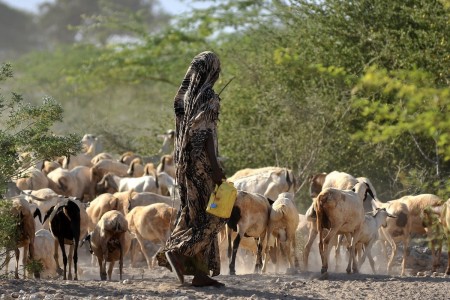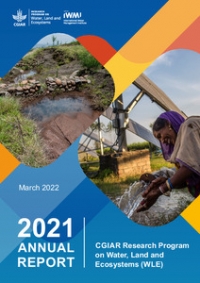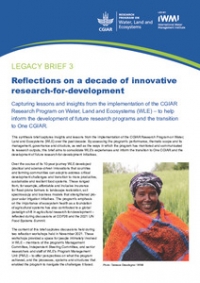Originally published on the CGIAR Gender Platform
Historically, natural resources such as land, water and forests have been managed as economic resources, with policies and programs deeply rooted in economic and political agendas.
Over time, research on nature–society relationships allowed new insights into the political nature of policies, institutions and processes of environmental change. Such research helped expose the gender dynamics at work in the management of natural resources.
In a forthcoming book chapter, we argue how two shifts influenced how and why gender became more visible in natural resource management and governance: the evolution of community collectives and the concept of plurality of institutional arrangements.
These analyses–which provide insight into how ownership, tenure and user rights to land and forests had gendered outcomes–laid the groundwork for gender-focused research. Such research unpacks how gender relations, which shape identities, norms, rules and responsibilities for women and men, also shape access to, use of and management of all natural resources.
Collectives reveal gender inequality in decision-making
The first critical shift in thinking was the idea of managing and governing natural resources by community collectives.
After World War II, across the Global South, natural resources were nationalized and accumulated by the state. In this context, Elinor Ostrom provided compelling evidence that natural resources are best governed and managed by collectives of local communities, requiring various arrangements which can respond to local contexts, cultures and socio-political environments.
Ostrom's work on natural resource management collectives was crucial for making gendered inequality in decision-making visible. However, an important oversight in Ostrom's work was inattention to the differences and inequalities that characterize community collectives.
Social and political factors shape women's rights to use natural resources
The second shift in thinking about natural resources was the concept that guide natural resource management.
A body of work on plural institutional arrangements has opened new windows into ways of analyzing gender and power imbalances and disparities. CGIAR-led research through the Collective Action and Property Rights program showed how women's use of natural resources are entangled in their gender identities, social relations and their comparatively disproportionate rights to make decisions.
It is becoming clearer that being able to exercise these rights is determined more by informal social rules and norms than formal ones. A case study from Kenya showed that when customary rights were made formal by allocating individual titles, new forms of exclusion were created.
Similarly, in India, land rights secured through formal legislation have been hard to achieve. This happened because of the social norms determining what is considered appropriate for women–i.e., not to exercise these rights or to engage in public domains of decision-making.
These developments show why securing rights to natural resources can only be effective in tackling poverty and food insecurity in enabling environments and contexts.
While there has been progress in bringing gender into natural resource management discussions, most research for development work continues to treat "nature" as an economic resource or commodity, and "gender" as being mostly about women. This explains why exclusion and inequality are often invisible or reduced to simplistic issues of engaging women.
As a result, power imbalances based on multiple types of discrimination–from someone's identity to systemic gender–power imbalances–remain intact.
Feminist approaches that challenge the status quo offer pathways to more equitably govern natural resources
Without urgently tackling structural and systemic barriers to inequality, we will not achieve equitable, resilient and sustainable food systems, as outlined in the One CGIAR goal.
Feminist political ecology gives us a framework to implement these systemic changes. It calls us to critically analyze power, politics and difference at scale, across institutions, and in policies and narratives. Feminist political ecology recognizes that the dynamics currently in play do not allow transformative change–not until we can tackle the inherent differences, including in assumptions of commons, collectives and community-based governance.
Fundamentally, feminist political ecology calls for rethinking gender dynamics in natural resources management. This means moving away from top-down, technical solutions and instead tackling both the symptoms of inequality and the social and political dynamics of natural resources.
This entails enquiry into the effects of multiple, overlapping forms of power, politics and difference, nested in kinship and community, other social relationships and in institutions at scale.
In this UN Decade for Ecosystem Restoration, we have an opportunity to learn from what has not worked well. We need to critically rethink the governance and management of natural resources.
Within CGIAR, this should start with looking at our own institutions, research initiatives and agendas to systematically incorporate gender, power and inclusion in the design and implementation of our natural resources programs and reforms.
---
Thrive blog is a space for independent thought and aims to stimulate discussion among sustainable agriculture researchers and the public. Blogs are facilitated by the CGIAR Research Program on Water, Land and Ecosystems (WLE) but reflect the opinions and information of the authors only and not necessarily those of WLE and its donors or partners.
WLE and partners are supported by CGIAR Trust Fund Contributors, including: ACIAR, DGIS, FCDO, SDC, Sida and others.


















